

HYDROGEOLOGY RESEARCH FACILITIES
Resources currently available through the Hydrogeology Program
Hydrogeology students have access to 4 bedrock wells, completed on-campus
in January of 2000. These 50 foot-deep wells were left "open-hole"
in the bedrock to allow research and instruction in fractured rock hydrology.
They are used in conjuction with the packers and pumps (below) to study
the nature of flow and contaminant transport in saturated fractured rock
(see an Article about the wells
in the UB Reporter ).
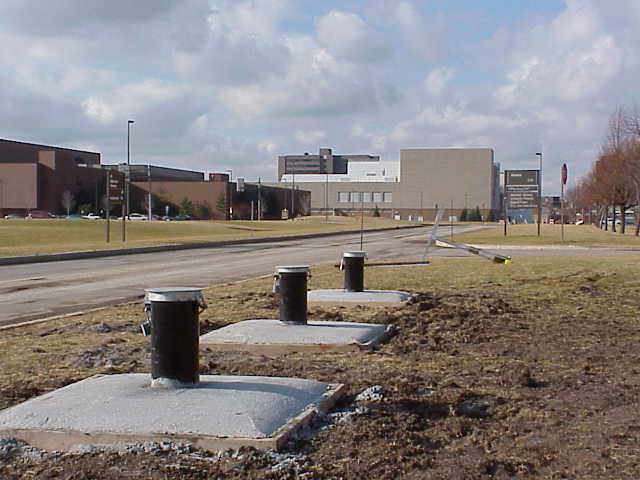
Equipment to be used with these wells and at remote locations include
several RocTest inflatable packers, and two stainless-steel Grundfos variable
speed pumps (flow rates from 0 to 50 gpm). A 16 food aluminum derrick
is used to lower packers and pumps into wells up to 100 feet deep.
The Hydro Lab also has a flow-through down-hole fluorometer, capable of
simutaneously detecting two fluorescent dyes in a well, and recording the
results automatically to a datalogger. The instrument was specially
built by the Geomagnitism
Group at University of Neuchâtel, Switzerland. This
system allows hydraulic and tracer testing of fractured rock over descrete
intervals
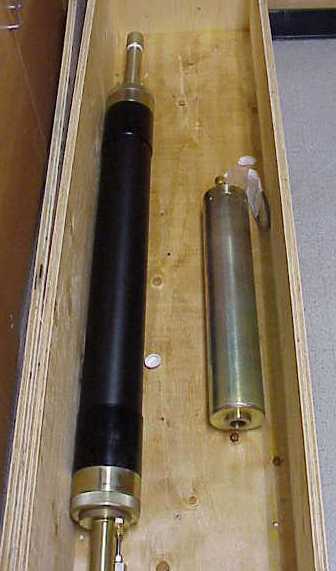
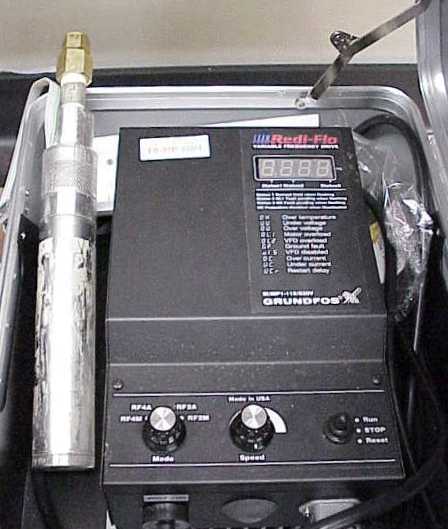
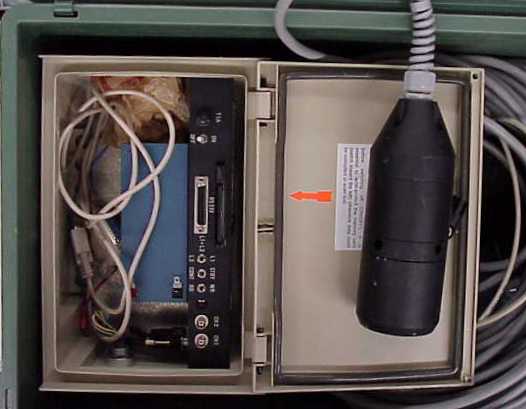
The Hydro Lab is a fully functional wet lab, with fume hoods DI
water and the like. This allows us to carry out laboratory studies
such as column tests, that support field results. Computationally,
the Hydrolab has two NT PC's, and three Sun SparcStations. These
machines are capable of performing high-performance ground-water modeling
as well as GIS-based map preparation and data manipulation.
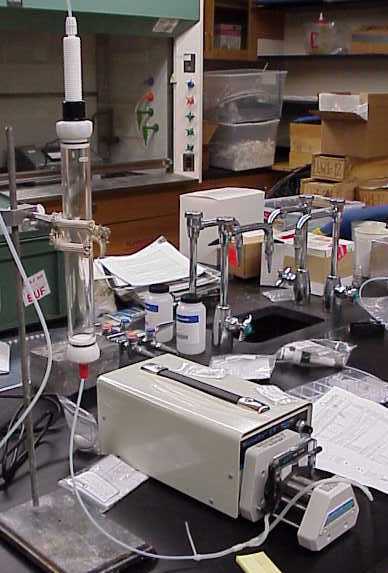
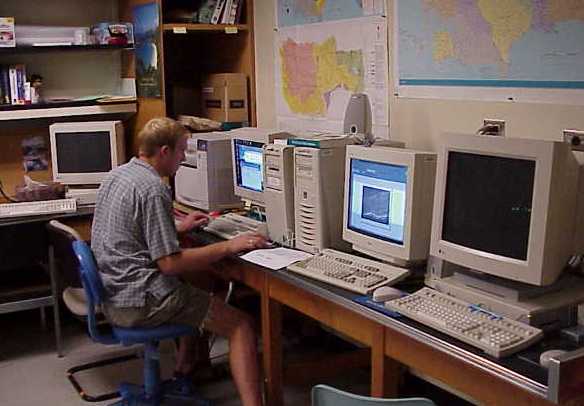
Resources Available through the Department of Geology at the University
at Buffalo
The Department of Geology
has a computing facility consisting of 16 SUN Ultra 5 333 MHz workstations.
These workstations have 90% time availability for research (10% being used
for teaching). An additional Graduate Computer Lab is dedicated to
Graduate Research, and consists of several NT and Macintosh machines, as
well as scanners and slide makers. A Silicon Graphics NT High-Performance
Graphics machine located at CCR is dedicated to performing Remote Sensing
research related to ground water.
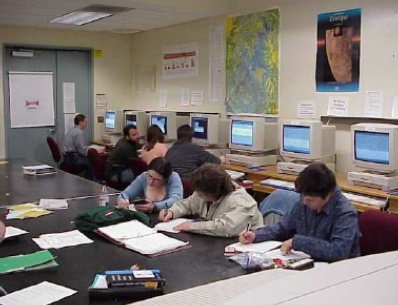
Other Related Resources Available at the University at Buffalo
I. National Center for Geographic Information and Analysis (NCGIA)
The NCGIA at the University
at Buffalo is a National Science Foundation Center for research and applications
of geographic methods, particularly in GIS, computer cartography, and spatial
analysis. The Geographic Information and Analysis Laboratory (GIAL)
is also available for research time as a multipurpose facility shared by
the Department of Geography and the NCGIA. The GIAL lab allows full-time
access to GIS software (including the ARC suite) for research use in data
management and analysis.
II. The Center for Computational Research (CCR) at the University at
Buffalo
The CCR is currently one of
the top 10 academic supercomputing sites in the United States. This world-class
computational research facility provides faculty with no-cost computational
resources. The hardware includes: a Silicon Graphics Origin2000 system
consisting of 64 processors connected in a shared-memory architecture,
an IBM RS/6000 SP (48 processors), a Sun Microsystems Beowulf cluster consisting
of 64 Sun Ultra 5 333 MHz workstations, and a high-end visualization systems
from Silicon Graphics and Pyramid Systems.
III. The Multidisciplinary Center for Earthquake Engineering Research
(MCEER)
The Multidisciplinary Center for Earthquake Engineering Research at
the University at Buffalo is a is a national center of excellence. It seeks
the reduction of earthquake damage and losses through research, development
and application of new knowledge and advanced technologies.







